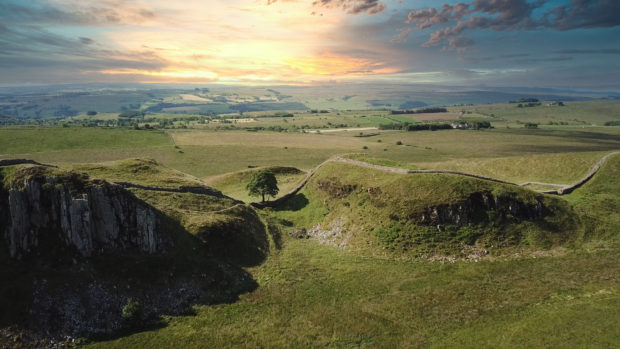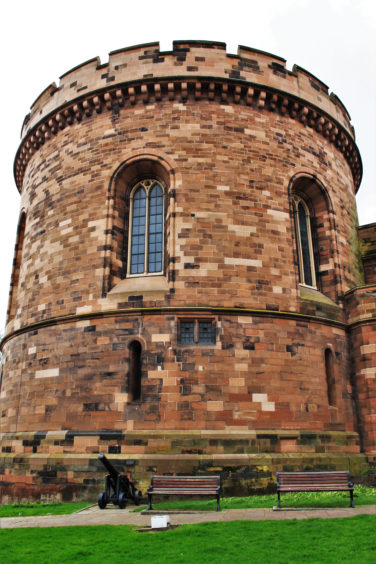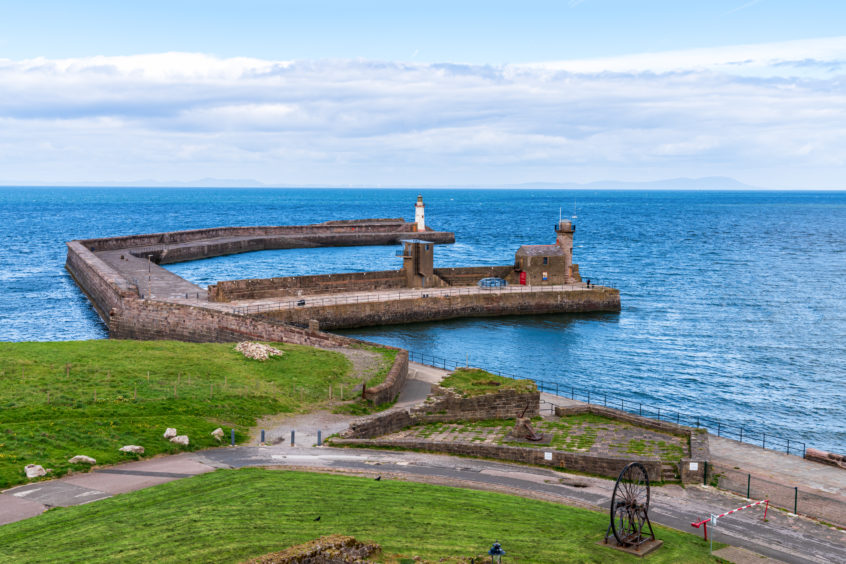
As we stood on top of Hadrian’s Wall, I felt a bit faint.
Not because of the stunning views across the rolling Cumbrian countryside, fabulous though they were, nor because of the bitingly cold wind whipping in from the sea. No, the realisation that I’d last been here on a primary seven trip in 1982 was behind my fit of the vapours.
Oi, stop doing the maths!
Back then, though, our only source of information had been Mrs MacLeod’s guidebook but this time we were accompanied by Discover Lakeland’s Anna Gray, a Blue Badge Guide boasting an encyclopaedic knowledge of the area’s history.
That included the wall, built to mark the northern boundary of the Roman Empire – and to keep out us pesky Picts. Highlights were the remains of a Roman fort at Birdoswald, the milecastle on Harrows Scar where the legionaries continued the wall along a narrow ridge, and the 12th-Century Lanercost Priory, built almost entirely of stone nicked from the wall.
Anna drove us out to the wall from Carlisle, our first base for the weekend, but this was the only time we used a car as “England’s Great Border City” is just an hour-and-a-half from Glasgow on the train, and the rest of the weekend was spent on Shanks’s pony.
She’d picked us up from the Halston, a superb “aparthotel” that used to be the city’s post office and had the biggest room we’d ever stayed in. The hotel’s former existence explains the name of its restaurant, the Penny Blue, and neither Mrs S nor I could resist the 10oz Wagyu ribeye.
My folks rave about Carlisle, they do their Christmas shopping here every year, and while the retail side of things is indeed excellent it was the history I was most interested in.
And that’s where Ian from Great Guided Tours came in, taking us on a walking tour of this terrifically walkable town.
We started in the Citadel, the city’s most iconic buildings built as a medieval fortress on the orders of Henry VIII which have served as, among other things, prisons and court rooms through the centuries. A visit to the courtroom last used in 1992 will bring back memories for anyone who remembers watching Crown Court in the afternoons. Another old-school reference.
Carlisle Castle’s an even older fort, its 900-year history including acting as Mary, Queen of Scots’ prison for a long while. Across the road, the Tullie House Museum helps tell the tale of Carlisle’s pivotal position on the border which meant it was fought over more than almost anywhere else, be it by the Border Reivers or Jacobites. The one criticism I’d have of Ian is that he seemed to overly enjoy telling me about the times my fellow Scots were on the wrong side of the result.
Jumping on another train after a terrific two days, we soon found ourselves in Whitehaven, the first time we’d actually been on the Cumbrian coast though we’d looked out over it from the top of various Lake District fells. I had no idea how important Whitehaven had been, coal making its harbour second-busiest behind London in the mid-18th Century.
A walk south along the coastline to St Bee’s Head and back will not only blow the cobwebs away, but will show you more of the town’s mining heritage as you pass the remnants of its 70-odd pits, including the Candlestick, a ventilation chimney that dominates skyline.
You’ll learn more about the mines at the Beacon, a striking harbourside museum that looks at the area’s past, present and future, including the Sellafield nuclear plant and the lucrative tobacco trade that took over from coal as the harbour’s main business.
When Glasgow began to dominate the tobacco trade, other Caribbean products took over and that’s where The Rum Story comes in, explaining how sugar from Barbados was turned into the dark spirit. It’s also impressive that neither it nor the Beacon shies away from the fact the area’s trade with the West Indies inevitably involved the slave trade.
We stayed at the gorgeous Georgian House Hotel which served quite the best “full Cumbrian” either of us had ever eaten. Asked by the chap if he could get me anything else, it was all I could do not to say: “Another of those.”
This was our first visit to the periphery of Cumbria but it certainly won’t be our last.
P.S. From February 12-15 the 900-year-old Carlisle Cathedral will be the centrepiece for a spectacular City Of Lights event, during which Carlisle’s landmarks will be lit by coloured lights.
Factfile
You can find out more about the tours, hotels and attractions at discoverlakeland.com, greatguidedtours.co.uk, thehalston.com, georgianhousewhitehaven.co.uk, thebeacon-whitehaven.co.uk and rumstory.co.uk

Enjoy the convenience of having The Sunday Post delivered as a digital ePaper straight to your smartphone, tablet or computer.
Subscribe for only £5.49 a month and enjoy all the benefits of the printed paper as a digital replica.
Subscribe © Shutterstock
© Shutterstock © Shutterstock
© Shutterstock